The Psychology of Exclusivity: Why Private Access Defines Today’s Luxury Art Market
Luxury used to need an audience. It lived for the flashbulbs, the private jets, the glossy magazine spreads where collectors posed beside their latest acquisition like trophies. It was performative, transactional, and often disconnected from emotion.
But something profound has changed in the luxury art market.
The new generation of collectors isn’t chasing applause. They’re chasing alignment. They don’t want to own art to show it off; they want to live with art that shows them who they are.
That shift might sound subtle, but it’s seismic. For decades, the art world was built on visibility: big openings, bigger egos, and the endless pursuit of being “seen.” But visibility has become cheap. Everyone is performing online, curating themselves to death. The result? Exhaustion.
And exhausted people don’t buy spectacles. They buy stillness.
The new luxury is not about status. It’s about sensation, the emotional intelligence of knowing what you truly need to feel grounded and alive. Art that speaks quietly to your nervous system, rather than shouting at your feed, is where modern collectors are investing.
It’s why buyers are retreating from mainstream galleries and open platforms to seek out private studios, bespoke catalogues, and invitation-only collections. Not because they’re elitist, but because they’re discerning. They’ve realised that privacy is the last unpolluted luxury.
Art, after all, is supposed to make you feel something you can’t articulate. And that feeling deserves protection from noise.
If you’ve ever stepped into a beautifully curated home and noticed how the art didn’t dominate the room but anchored it, calm, confident, quietly magnetic, you’ve already witnessed this psychological shift. That’s what exclusivity now represents: serenity.
It’s not about being better than others. It’s about being with yourself in a world that constantly drags your attention away.
For emotionally intelligent collectors, exclusivity has become a form of self-care. They’re not hoarding status; they’re protecting meaning.
And that subtle, powerful change is redefining what it means to participate in the luxury art market today.
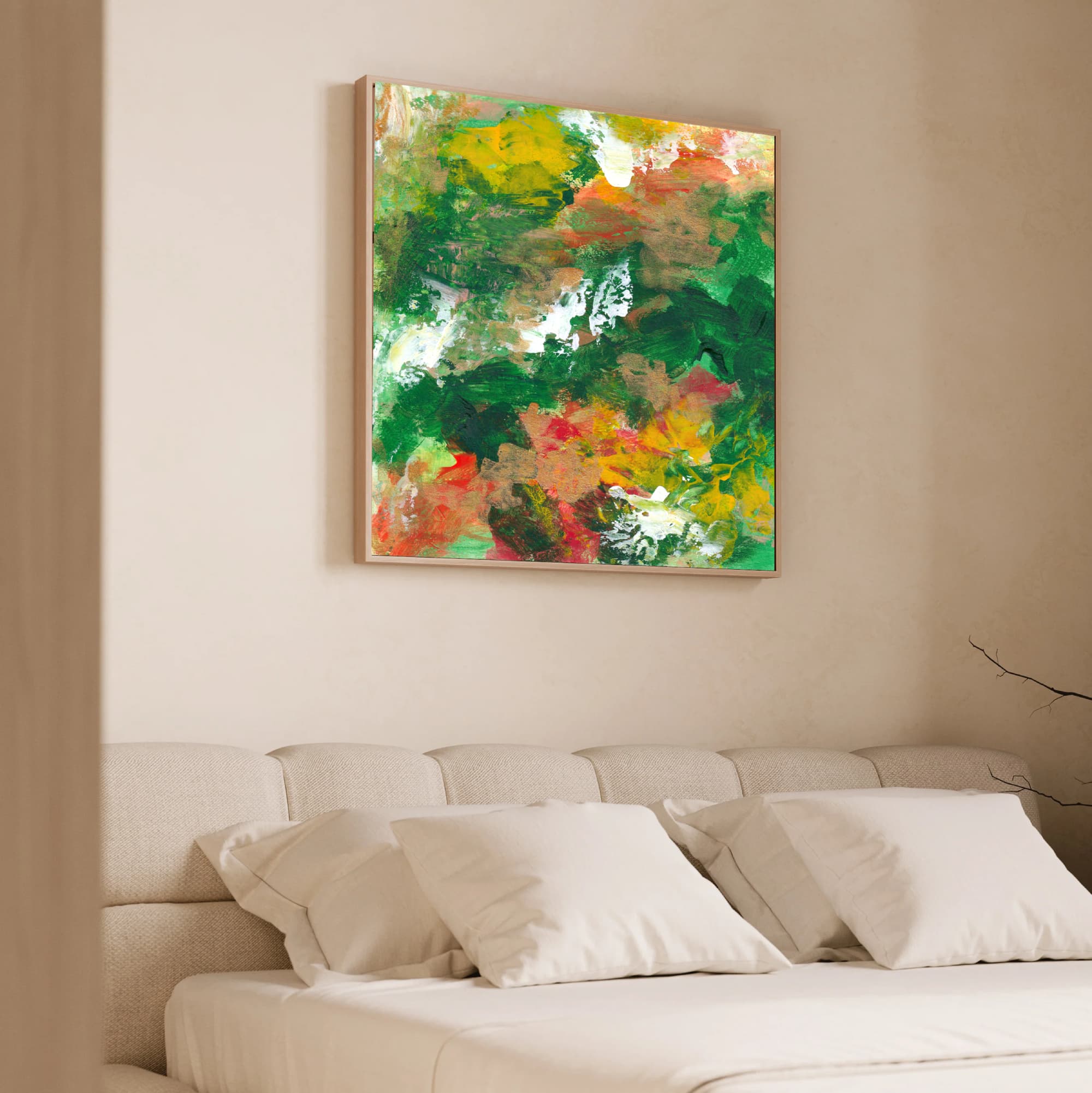

The Myth of Open Access
The internet sold us the idea that access equals freedom. Anyone can see anything, buy anything, become anything, from wherever they sit. For a while, that sounded revolutionary. But in the context of art, it became the slow death of desire.
The problem isn’t visibility. It’s saturation. When you can see a thousand pieces a minute, the brain starts treating beauty as background noise. Everything looks impressive for two seconds, then vanishes into the scroll.
And the luxury art market depends on what the mainstream forgot: anticipation.
There was a time when viewing art required intention. You went somewhere. You stood before a piece long enough for it to alter your breath. Now, art competes with breakfast photos and self-help quotes. Its power gets reduced to pixels.
The illusion of open access has made art too available, and therefore emotionally weightless. When collectors can click “add to cart” as casually as ordering a new jumper, the transaction loses its ritual.
Yet humans crave ritual, especially when it comes to meaning.
That’s why the resurgence of private catalogues and invite-only viewing rooms feels so grounding. It restores what fast culture stripped away: significance.
When something is not instantly accessible, your brain reclassifies it as valuable. The psychology of scarcity isn’t just marketing theory; it’s biological. Dopamine spikes when something feels rare, but the satisfaction comes when that rarity is earned.
Private access gives collectors back the sense of earning, of being chosen, of being part of something intimate and deliberate.
And it’s not manipulation. It’s emotional pacing.
The truth is, people in the luxury art market are tired of being sold to. They’re intelligent enough to see through urgency tactics. They don’t want countdown timers and promo codes; they want art that feels timeless, untouched by the noise of algorithms.
One collector told me she stopped buying online after realising she couldn’t remember what half her “limited edition” prints even meant to her. “It all blurred,” she said. “Too easy. Too available. Too fast.”
She wasn’t wrong. When art becomes too easy to access, it stops feeling like art.
That’s where private spaces, like The Collector’s Vault, come in. They slow the experience down. They restore reverence.
Inside a private catalogue, a work isn’t one of thousands; it’s one of a few. That intimacy creates not only exclusivity but a deeper sense of trust. Collectors know they’re not being manipulated into buying. They’re being invited to engage.
The luxury art market has started to recognise this psychological need. Quietly, the most forward-thinking artists and collectors are stepping back from open visibility and creating micro-worlds of access. These private environments feel sacred, protected from the constant exposure that cheapens experience.
The mind associates that privacy with worth.
You can see this shift mirrored in other luxury spaces too. The best restaurants no longer list every detail online. High-end fashion houses have reduced their public campaigns. Even travel brands are replacing “exclusive resort” with “invitation-only sanctuary.”
Luxury, once about spectacle, now trades in stillness.
And that’s not just poetic branding. It’s the psychological correction to an era of overwhelm.
Why Exclusivity Feels So Good
Exclusivity has always been misunderstood. For decades, it’s been painted as the enemy of equality, something elitist, snobbish, designed to exclude. But what’s often missed is that true exclusivity is not about shutting others out and being secretive. It’s about preserving emotional space.
When a collector chooses to enter something like The Collector’s Vault, what they’re actually doing is creating a psychological boundary, a buffer against noise, opinion, and haste. They’re giving themselves permission to connect with art on their own terms, in their own rhythm.
That’s not arrogance. That’s emotional regulation.
The human brain isn’t built to process infinite choice. We happily tell ourselves that freedom means having endless options, but in reality, well, according to psychology, it’s quite the opposite. Too many choices create anxiety. This is called the “paradox of choice,” and it’s why the quiet precision of exclusivity feels like relief.
When a collector is invited into a small, private world, one that holds only what truly matters, they can breathe again. They’re not frantically comparing. They’re feeling.
That sense of containment has enormous emotional power. It signals safety. It says: you don’t have to perform here.
And that’s where the new luxury art market thrives, in that deep sigh of relief when a collector realises they’re not being sold to, they’re being seen.
It’s the same energy you get when you walk into a perfectly curated space. Nothing shouts for your attention. Everything has a purpose. Your body softens because it knows it’s safe.
Exclusivity works because it’s not about scarcity for the sake of ego; it’s about protecting resonance from dilution.
I once had someone tell me that they felt calmer simply being inside a private catalogue. They said, “It’s nice not to have to fight the crowd, even the digital one.” That comment stayed with me. It perfectly captures the quiet psychology driving modern collecting: people are tired of being bombarded by noise disguised as opportunity.
Exclusivity gives permission to focus.
That’s why emotional collectors, the ones who buy from presence, not pressure, respond so deeply to private access. It validates their desire for meaning without forcing them to explain it.
And from a biological standpoint, it’s fascinating. When we feel safe, our dopamine and serotonin levels stabilise. Decision-making becomes intuitive, not impulsive. That’s when collectors make their best choices, the ones that actually last.
So yes, exclusivity feels good. Not because it flatters the ego, but because it soothes the nervous system.
The collectors shaping the luxury art market are no longer chasing adrenaline. They’re seeking oxytocin, the chemical of trust, intimacy, and calm.
It’s why you’ll never see them brag about what they own. For them, the true pleasure is in the experience of finding it, not the announcement that follows.
The irony, of course, is that the people who shout the loudest about their collections are usually the least connected to them. It’s like the guy revving his sports car in a traffic jam; everyone can hear him, but no one cares. I mean, perhaps apart from kids. The same applies to art. Real luxury doesn’t need an audience. It needs a pulse.
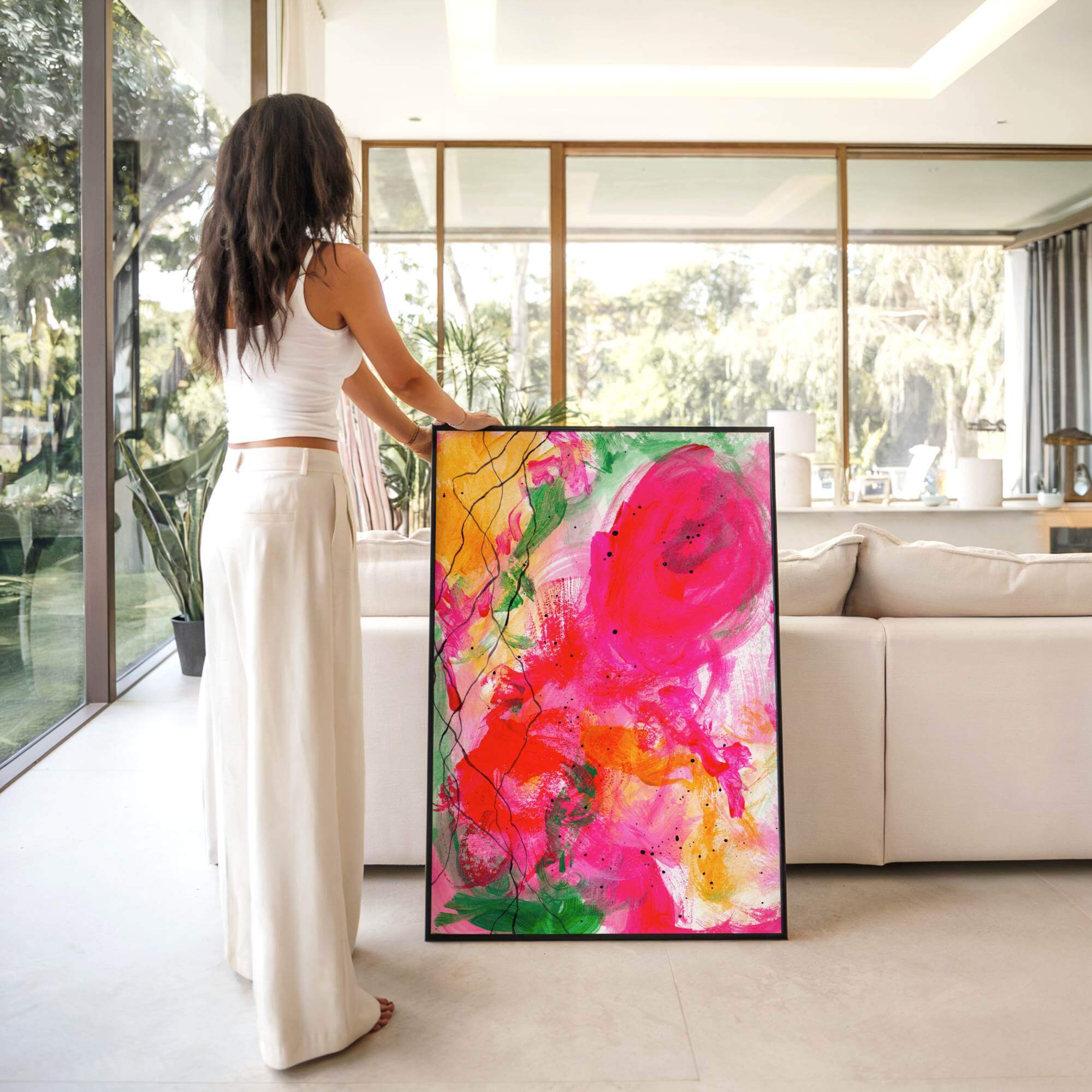
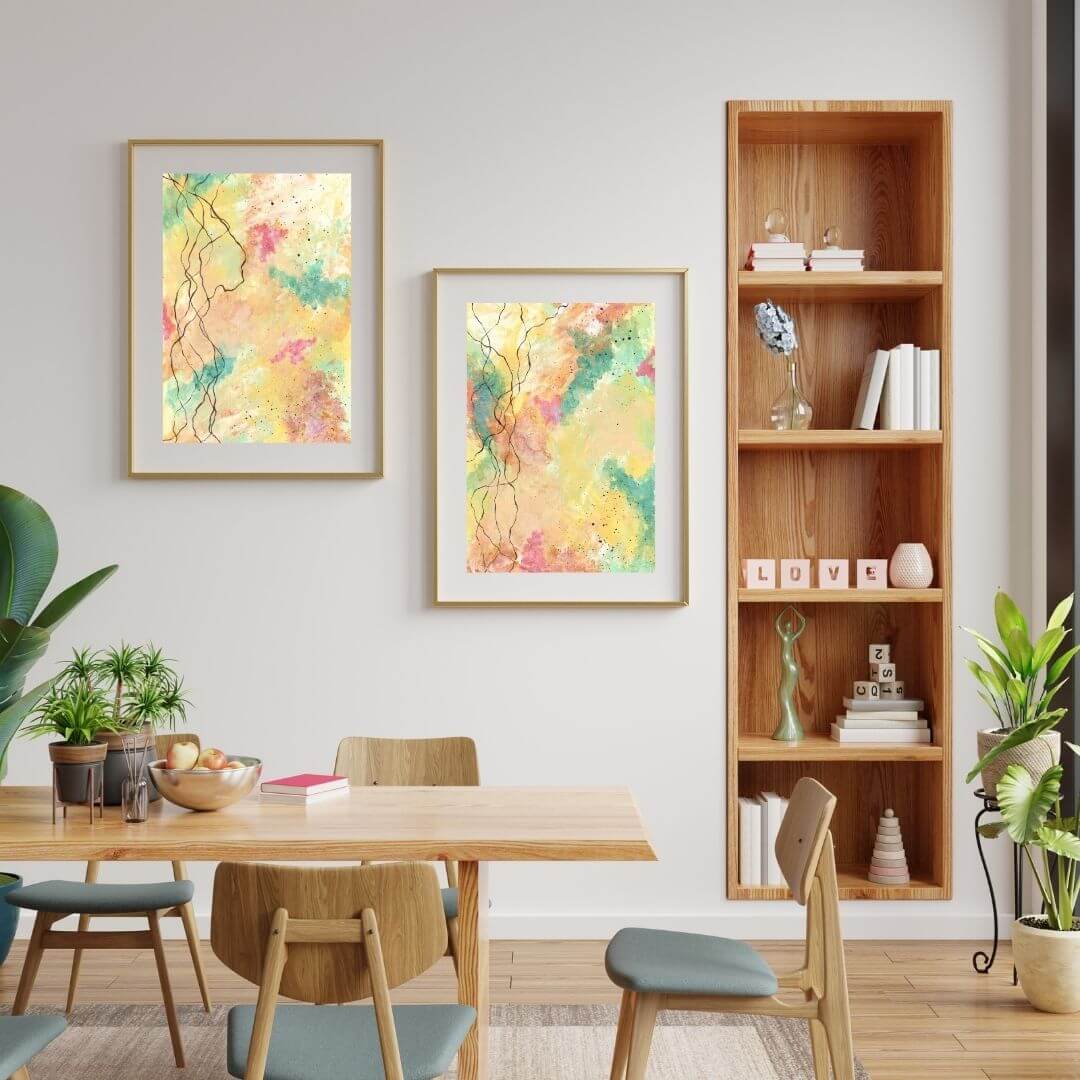
The Luxury Art Market and the End of Spectacle
Let’s be honest: the traditional luxury art market has had a performance problem.
For decades, art fairs, auctions, and galleries turned collecting into theatre. Champagne in hand, people posed for photos beside works they didn’t necessarily feel; they just knew they were supposed to want them. The scene was as much about validation as it was about vision.
But performance fatigue has set in. The constant parade of events, selfies, and statements has lost its edge. People are craving sincerity again.
The collectors who once competed to outbid each other are quietly walking away from the spectacle. They’ve realised that genuine connection happens offstage, in the quiet corners where intention outweighs impression.
Art Basel still has its place, but increasingly, the serious conversations are happening in private studios and on encrypted email threads, not over champagne flutes in a crowd.
This isn’t rebellion. It’s recalibration.
The new definition of luxury is self-awareness.
Collectors now understand that their energy is finite. They’re curating what they give it to, spaces, people, and even art. The most intelligent among them are seeking emotional ROI. Not in the “how much will it appreciate in five years” sense, but in the “how much peace does it bring me every day I live with it” sense.
The emotional economy of the luxury art market has overtaken the financial one.
That’s why smaller, slower, quieter practices like yours are thriving. They respect the psychology of presence. You’re not asking collectors to buy into a system. You’re asking them to come home to themselves.
And when that happens, the purchase becomes something else entirely: a form of alignment.
A few years ago, this would’ve sounded like wishful thinking. But look around. The same thing is happening in every luxury vertical. Fashion houses are cutting social media presence. Michelin-star restaurants are returning to unlisted numbers and private bookings. Even wellness retreats have started moving from “transform in seven days” to “reconnect for life.”
Luxury has become introspective.
And art, because it’s emotion made visible, leads that transformation.
Collectors are no longer seduced by the idea of being “seen” with a piece. They want to feel seen by it.
That’s a very different psychological reward.
It’s the shift from I want to own that to I want to understand myself through that.
The quietest collectors in the luxury art market are now the most powerful because they’ve divorced their identity from display. Their art isn’t an announcement; it’s an anchor.
You can see this reflected in interior design, too. Instead of giant “statement” canvases chosen to impress, designers are integrating emotionally intelligent art into holistic spatial design, art that calms, balances, and deepens the environment.
The shift is cultural, but it’s also biological. Our attention spans are shrinking. Our social lives are increasingly digital. So, when a collector interacts with something tactile, private, and permanent, the body responds with gratitude. The ritual of buying art, when done right, reconnects people to the physical world.
This is the secret truth most auction rooms won’t admit: adrenaline-based buying wears off. Emotional buying endures.
That’s why private access models, limited catalogues, one-to-one consultations, and emotionally grounded storytelling are redefining what “high-end” even means. They don’t rely on spectacle; they rely on presence.
And presence, as you’ve written in Stillness Is a Weapon, is the most luxurious state of all.
The Emotional Intelligence of Today’s Collector
If you look closely at the current luxury art market, you’ll see something fascinating: emotional intelligence has quietly replaced connoisseurship as the true mark of taste.
Collectors today aren’t relying on critics, curators, or consultants to tell them what’s “important.” They’re trusting their nervous system. They’re buying with intuition, not instruction.
And it’s working.
Because here’s the truth: art collecting isn’t about taste, it’s about self-awareness. The people thriving in today’s art scene know what kind of emotion they’re seeking to live with. They understand that art doesn’t just decorate a space; it alters the energy of it.
That shift has changed how collectors engage with artists, too. The most emotionally intelligent buyers aren’t browsing art like they’re shopping for furniture. They want dialogue. They want depth. They want to know why something exists, not just what it looks like.
If you’ve ever had a collector say, “I can’t quite explain why this piece moves me,” you’ve witnessed the shift firsthand. That sentence used to sound naïve in old-school art circles. Now it’s a sign of sophistication.
The emotionally intelligent collector isn’t performing discernment; they’re feeling it.
And when they buy, they’re not just supporting an artist. They’re honouring an emotional truth they’ve recognised in themselves.
It’s no coincidence that the art world’s loudest voices, the influencers, the speculators, the flippers, are losing relevance while private, values-led artists are gaining quiet authority.
Because the emotional intelligence of the modern collector demands integrity.
They can spot when a work is made to impress rather than to express. They can sense when a conversation is genuine or when they’re being handled.
They crave authenticity, that unfiltered connection between creator and collector that exists outside of algorithms, trends, and gallery hierarchies.
And when they find it, they don’t hesitate. After all, why would they? We lose human connection every day to AI and to the internet… and everything became cold and distant.
We could say that what’s happening in the luxury art market right now is not just aesthetic; it’s an emotional evolution.
Art is returning to what it always was, a conversation between souls, not a transaction between brands.
You can feel it in the way collectors now approach acquisition. They don’t ask, “What’s the resale value?” They ask, “What’s the energy?”
And once someone starts asking that, you can’t sell them hype again.
This emotional awareness is why exclusivity resonates so deeply. It offers a safe container for vulnerability. Because make no mistake, buying art that speaks to you isn’t a financial risk. It’s an emotional one.
The Science Behind Private Desire
Let’s be honest, the luxury art market has always been built on wanting. But wanting has changed.
For years, collectors chased what everyone else wanted first. The biggest names, the loudest openings, the limited editions everyone was desperate to “secure.” But that kind of desire burns fast. It’s adrenaline, not emotion.
Real desire, the kind that still hums in your chest months later, isn’t about possession. It’s about connection. It happens quietly, usually when no one’s looking.
Consumer desire says, “I need to have this before someone else does.”
Emotional desire says, “This has already found me.”
And that’s the difference.
When art is everywhere, scrolling through your feed, tagged and hashtagged to death, it loses intimacy. Your brain files it under background noise. But when art lives behind an invitation, when you’re personally welcomed into something like The Collector’s Vault, it hits differently.
It’s not scarcity that makes it magnetic. It’s recognition. You feel seen, not targeted.
There’s a little spark that this was meant for me. And that’s where the psychology lives, not in manipulation, but meaning.
The human mind doesn’t crave quantity; it craves significance. We want to feel chosen. It’s the same reason people still keep handwritten notes long after they’ve deleted every text message. The effort carries weight.
That’s why the most emotionally intelligent collectors are stepping away from open exhibitions and endless online fairs. Those environments might feed curiosity, but they starve connection.
At public events, attention scatters. You drift from one work to another, half-listening to small talk and half-watching your own reflection in the glass. But in a private setting, you linger. You take time. You look again.
That’s what emotional desire looks like: duration.
And in a world obsessed with speed, duration feels radical.
When someone enters The Vault, their body language changes. Shoulders drop. Breathing slows. They stop scanning and start sensing. Because suddenly, they’re not in a sales space, they’re in a sanctuary.
It’s why collectors often describe private access as coming home. One told me, “It’s not about owning something others can’t. It’s about feeling something I couldn’t before.”
That single sentence sums up the shift.
Luxury used to mean control. Now it means permission, permission to slow down, to feel something real, to have an experience that doesn’t demand to be shared.
This evolution is changing how artists create, too. The most self-aware ones, you included, are no longer chasing exposure or scale. They’re building ecosystems that protect intimacy, not dilute it.
Private access isn’t a marketing trick. It’s emotional curation.
And when collectors understand that, the question stops being “Why isn’t this everywhere?” and becomes “Why does this feel like it was meant for me?”
That’s the new axis of desire in the modern luxury art market. Quiet, human, and impossible to fake.
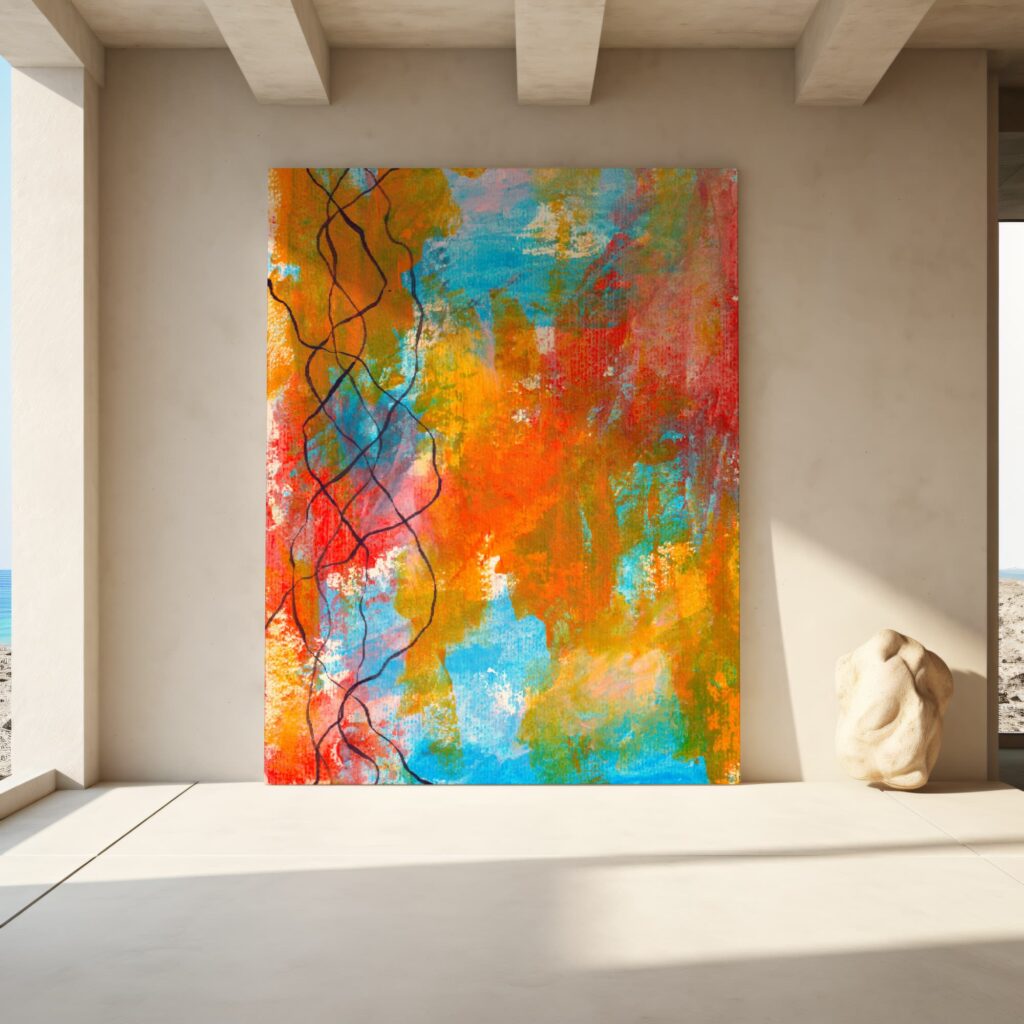

Why Private Catalogues Work
There’s a reason the luxury art market has started quietly turning back toward private catalogues: they restore a rhythm that the modern world lost.
A public store, no matter how elegant, trains buyers to browse mindlessly. A private catalogue reintroduces ceremony. It slows the process down to a human pace.
When collectors enter The Vault, they aren’t bombarded with categories and filters. They’re met with stillness. A limited number of works. A sense of quiet respect.
That environment doesn’t just look different, it feels different. The collector’s brain moves from consumer mode into contemplation mode.
And that’s where trust lives.
The public internet tells us to move fast, click now, and decide instantly. A private catalogue asks the opposite question: How does it feel to linger?
That’s not a sales tactic. It’s an emotional reset.
People underestimate how much of buying art is about nervous system regulation. When collectors feel rushed, they freeze. When they feel safe, they commit.
Private catalogues create that safety. They remove the external pressure that makes most art-buying experiences feel performative. There’s no audience. No obligation to react. Just presence.
That’s why the most discerning collectors now prefer private access. They understand that luxury isn’t about abundance, it’s about alignment.
This model also changes the emotional landscape for artists. In a public marketplace, art competes. In a private catalogue, it converses. Each work becomes part of a quiet story, a thread that ties emotion, philosophy, and environment together.
That’s the psychology behind exclusivity: it transforms buying into belonging.
And when something as personal as art becomes a mirror for belonging, the relationship between collector and creator stops being commercial. It becomes communal, not in a “social group” way, but in the spiritual sense of shared presence.
That’s why private catalogues will continue to outperform public galleries for emotionally intelligent buyers.
They respect attention as the finite luxury it is.
The Collector Who Chose Silence
Every so often, I get a message that reminds me exactly why I built The Vault in the first place.
One came from a collector who’d been following my writing for a while. They said it felt like “reading a painting,” which I loved because it was such an honest way of describing resonance, that sense of I can’t explain this, but I know it’s true.
They didn’t ask for prices or editions. They just said they’d been looking for something that didn’t feel performative. “I want a piece that doesn’t want to be talked about,” they wrote.
That line still hits me.
They didn’t want to “own” art. They wanted to be with it, quietly, privately, without turning it into content.
When they joined The Vault, they said the thing they liked most was that nothing about it felt rushed. No countdowns. No pressure. No artificial scarcity. Just a small collection of work that spoke when it needed to.
And that’s the core of what’s driving the modern luxury art market. The best collectors aren’t chasing the thrill of acquisition anymore. They’re chasing the relief of stillness.
People are so used to being sold to that when they finally experience stillness in the buying process, they feel emotional. They soften.
That’s why private access works. It gives them a break from performance, theirs and everyone else’s.
The collector who chose silence wasn’t rare. They were representative of something bigger: a collective fatigue with the spectacle of ownership.
Because honestly, what’s left to prove? The loudest luxury has already lost its mystery.
Why Collectors Crave Stillness
Most collectors don’t consciously realise it at first, what they’re looking for isn’t an artwork, it’s a regulation.
Their day-to-day life is full of noise: phones buzzing, meetings stacked, content everywhere. Their nervous system never gets a full stop, only commas. Then they encounter a work of art that doesn’t demand anything, and their body exhales.
That’s not a metaphor. That’s neuroscience.
Stillness gives the brain something that nothing else in modern life does: a break from processing. And that’s exactly what emotionally intelligent collectors are paying for now: the way stillness feels.
That’s why so many describe their acquisitions as grounding. One collector told me, “I can’t meditate, but I can sit in front of that piece and feel the same thing.”
They’re not exaggerating. Abstract art especially when it’s emotionally attuned rather than decorative, changes how a room breathes. The right piece can slow time down.
(Internal link → “The Healing Power of Abstract Art in Luxury Spaces”)
Insert this right after the previous sentence about how abstract art changes how a room breathes. It connects beautifully to your article explaining art’s psychological impact in interiors.
Stillness, in this context, is not emptiness. It’s luxury’s most advanced form, attention that’s unfragmented.
And collectors are starved for it.
You can see the proof in how high-end clients are now approaching commissions. They don’t want “concepts.” They want presence. They want art that brings coherence to the room, not noise to fill it.
That’s the emotional parallel between your book Stillness Is a Weapon and the luxury art market itself. The book explores stillness as emotional power; the market is now catching up.
The collectors shaping the new landscape aren’t adrenaline seekers. They’re not addicted to novelty. They’re recovering from it.
And when they find stillness, they don’t want to let it go.
That’s why private catalogues like The Vault resonate; they aren’t selling products. They’re restoring peace.
The psychology is simple: we protect what calms us.
That’s why exclusivity and privacy have become the emotional infrastructure of luxury. They permit people to feel safe in a world that never stops watching.
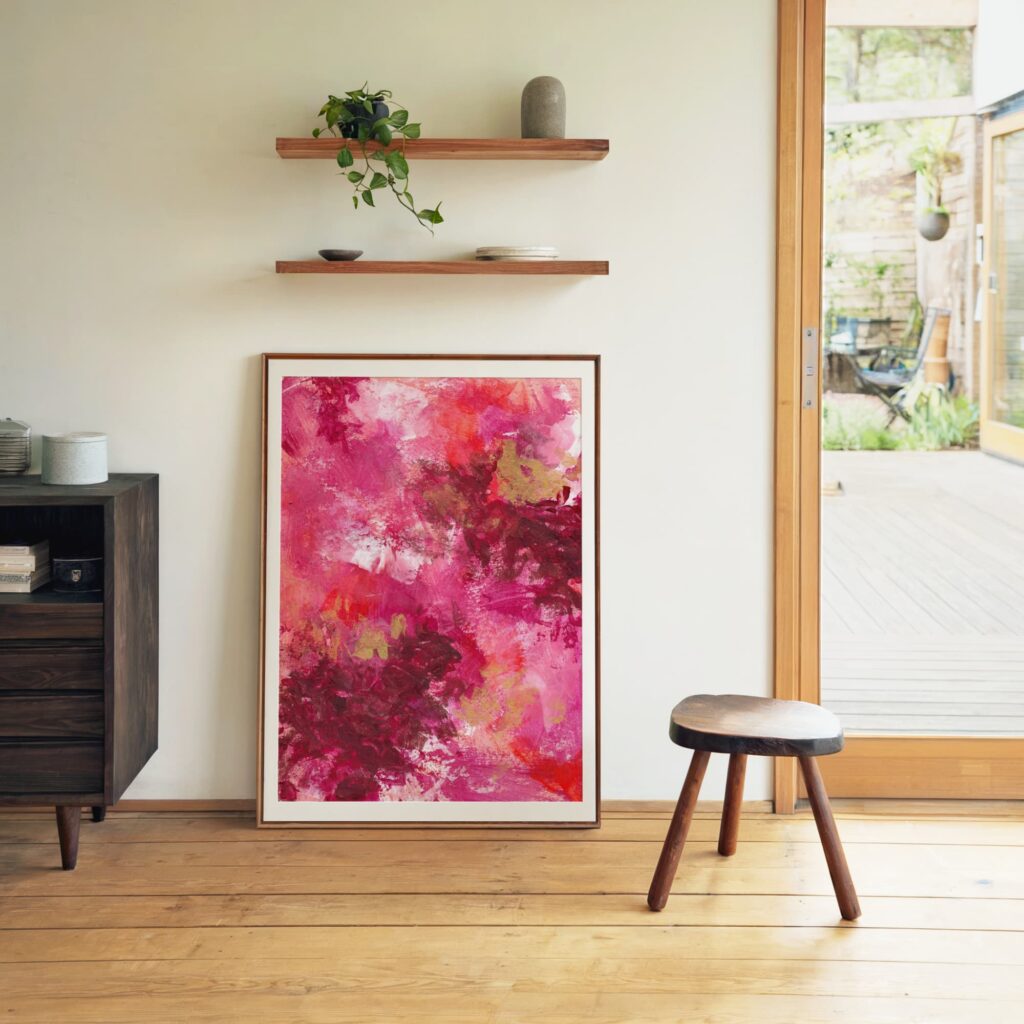
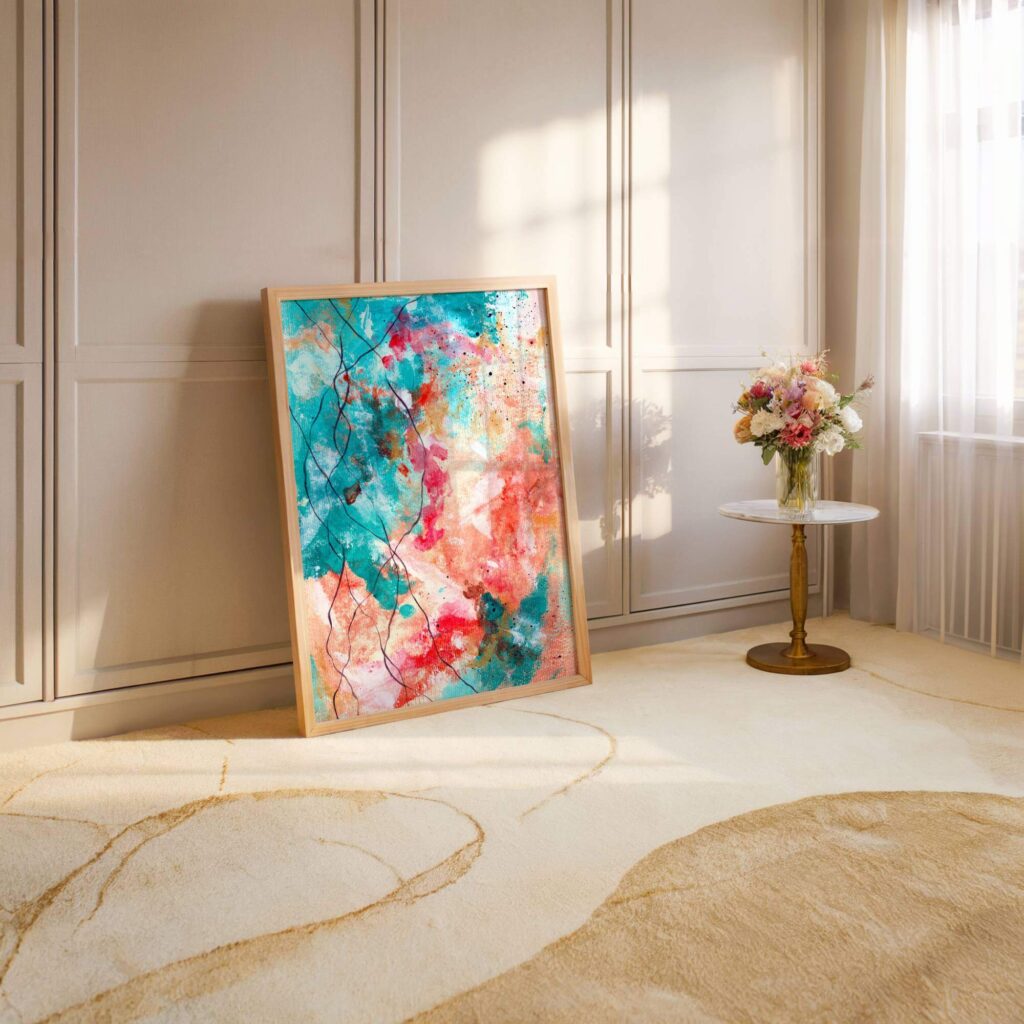
The Private Experience Economy
If you’ve noticed, everything that used to be public is becoming private again.
Luxury fitness, private travel, curated dining, and yes, art. The era of mass access has reached its breaking point. People are paying to disappear.
The luxury art market is mirroring that shift perfectly. Collectors don’t want exposure; they want intimacy. They’re not looking for public spectacle but for private resonance.
This is the “private experience economy”, where meaning outweighs visibility, and privacy itself becomes aspirational.
In that sense, art is leading the movement. Because art is still one of the few things you can experience entirely in your own body. It doesn’t need a caption, a comment, or an audience.
And when collectors realise that, they start curating their emotional environment instead of their image.
You can see it in how certain clients now buy. They don’t ask what will “look good on the wall.” They ask how it will feel in the room.
That’s a fundamental rewiring of values, from aesthetic to emotional alignment.
What’s unfolding is bigger than taste. It’s a quiet revolution in how people experience meaning. The artists who understand this, who protect privacy, design slowness into their process, and speak to emotion over ego, will thrive.
The rest will keep shouting into the void, wondering why no one’s listening anymore.
Private access has become the new trust mark of the luxury art market.
And for collectors who care about depth, that’s the only kind of luxury that still matters.
How Scarcity Builds Trust
You’ve probably heard the old marketing cliché: “Create scarcity.”
Limited time. Limited edition. Limited patience.
But let’s be honest, when someone says “Only three left!” on a website that restocks every Tuesday, you don’t feel urgency; you feel irritation. Manufactured scarcity insults intelligence.
Real scarcity, though, that’s different.
When something is truly limited, because it took time, care, and actual emotion to make, it carries a weight that marketing can’t fake. You can feel it. It’s in the texture, the tone, the way the piece sits in silence.
Collectors in the luxury art market are experts at spotting authenticity now. They’ve seen too many “exclusive drops” that looked suspiciously identical to last month’s. They can tell when scarcity is real and when it’s theatre.
True scarcity is the by-product of focus.
When you create intentionally, slowly, with presence, you can’t mass-produce. You can’t make twenty versions of the same feeling. That’s why private catalogues like The Vault resonate. They’re not pretending to be rare. They simply are.
There’s a quiet trust that forms between collector and artist when rarity comes from restraint. The collector isn’t being manipulated; they’re being respected.
One collector once told me, “I’d rather wait six months for something that means something than buy another print that feels like déjà vu.”
That’s the difference between acquisition and appreciation.
Scarcity, at its best, isn’t a trick. It’s a temperature. It tells the collector, This is slow art, not fast content.
And yes, there’s humour in this truth too. Because the world is full of “limited” things that seem suspiciously unlimited. The luxury art world has had its fair share of those, from never-ending editions to “private” collections available on Google.
Let’s call it what it is: scarcity without sincerity is noise.
Real scarcity, handled with emotional intelligence, doesn’t need to shout. It just stands still, and lets the right people come closer.
The Slow Rebellion Against Mass Production
You can always tell when something’s mass-produced: it looks perfect, but it has no pulse.
Walk into any overdesigned show home and you’ll feel it. Everything matches. Everything gleams. Everything’s dead.
The rebellion against that kind of polish is already well underway, and it’s happening quietly in the luxury art market. Collectors are realising that perfection isn’t the goal anymore. Presence is.
They don’t want a showpiece that screams “expensive.” They want something that makes their shoulders drop when they walk in the room.
Luxury used to mean control. Now it means comfort.
It’s the difference between a pair of patent shoes that pinch and the pair of Italian leather boots that somehow fit like a memory.
The same thing’s happening with art. People are done with pieces that look like they were designed by committee. They want something that feels like it was painted by a person who’s actually lived.
A client once told me she got rid of a six-figure piece because, and I quote, “It made the room feel smug.” You can’t buy your way out of that kind of energy.
That’s what this new rebellion is about, emotional intelligence disguised as taste.
It’s not about rejecting luxury. It’s about refining it.
In The Collector’s Vault, every work has that pulse. You can see the brushstrokes. You can feel the human rhythm that created it. Nothing is over-sanitised, nothing is mass-pleasing. It’s art that breathes.
This isn’t a rejection of glamour, it’s the grown-up version of it. The kind that doesn’t need to be announced.
True luxury now looks a lot like quiet confidence.
The rebellion isn’t loud, and it certainly isn’t trendy. It’s just people finally buying things that feel like themselves again.
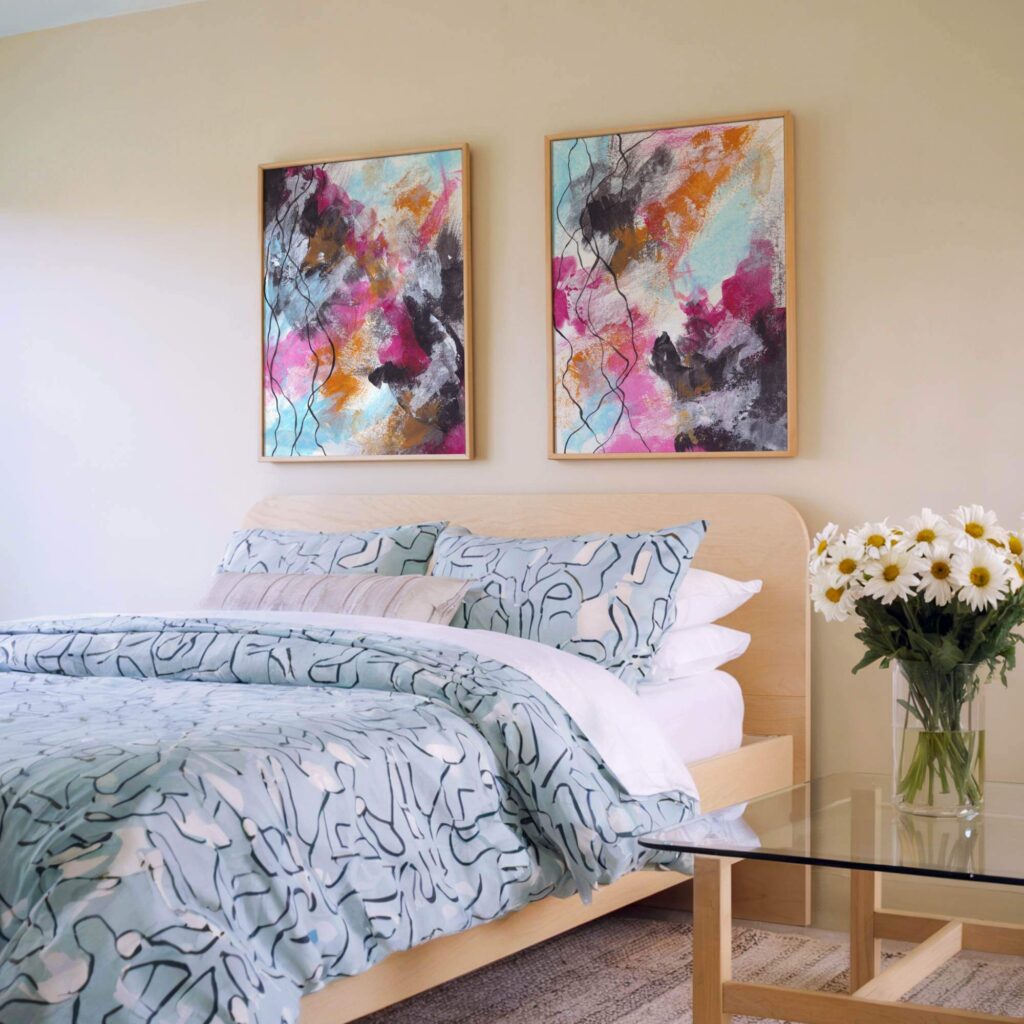
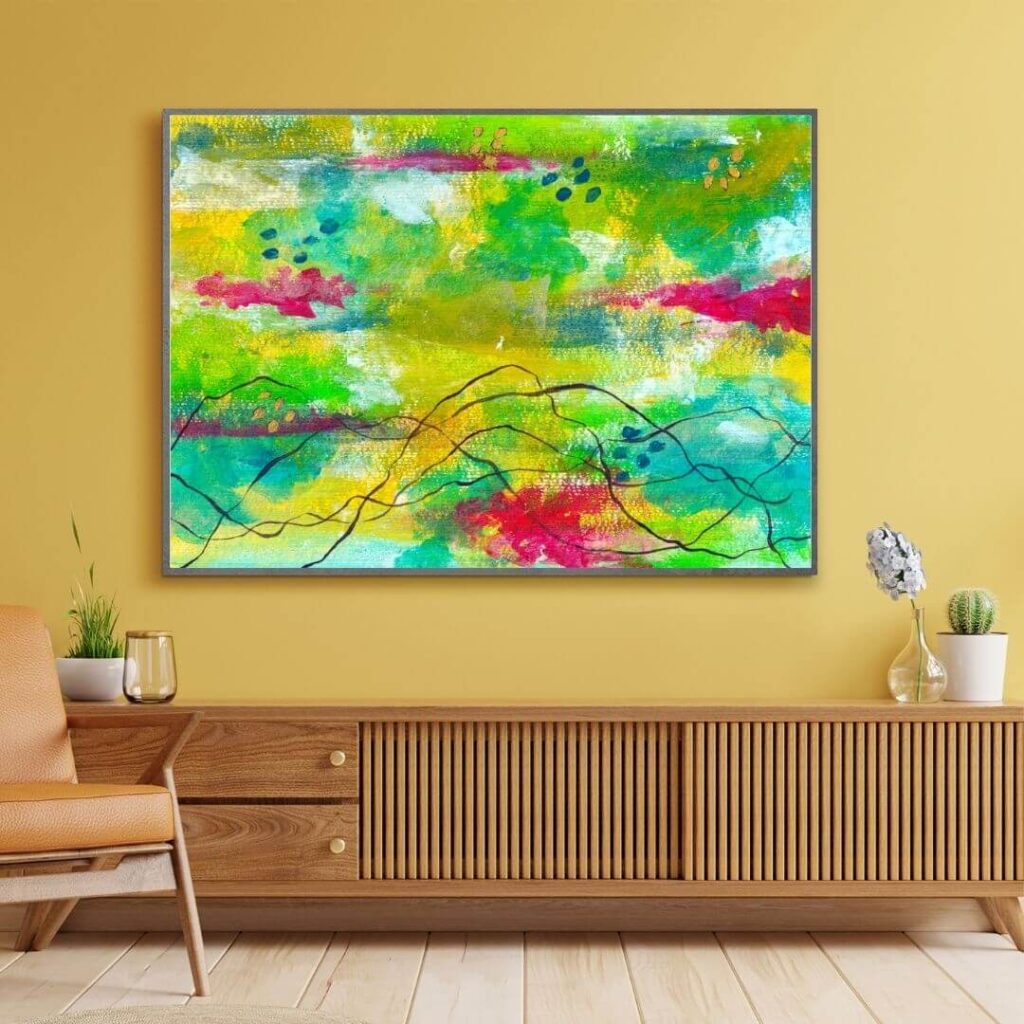
What It Means for Collectors and Curators
The irony of the luxury art market is that everyone pretends to be looking for “meaning,” but most of them are really just looking for validation.
You can see it at any fair. Someone pauses thoughtfully in front of a huge piece, nodding like they’ve just unlocked the secret to life, but give them ten minutes and they’ll be back checking the resale stats.
The people driving the new market? They’ve opted out of that circus completely.
They don’t need to be seen owning art. They just want to feel better living with it.
That’s what makes this new era of collecting interesting: the status is still there, but it’s private. Internal. The satisfaction comes from being grounded, not being photographed.
Collectors are starting to treat their homes like extensions of their emotional well-being. Art isn’t a “conversation starter” anymore; it’s a nervous system reset.
Curators are noticing it too. The smartest ones don’t chase trends anymore; they curate calm. They’re sourcing work that feels alive rather than loud. Pieces that regulate a space instead of dominating it.
You can spot these collectors by how they talk. They say things like “it feels right” instead of “it’ll photograph well.” They care about texture, emotion, and stillness.
They’re done being seduced by spectacle. They want depth.
Private access is what allows that depth. When there’s no crowd, no performance, and no need to “appear cultured,” something real happens.
Collectors tell the truth. They relax. They engage emotionally rather than strategically.
That’s what The Vault offers: a space where art isn’t competing for attention. It’s being felt.
For serious collectors, that’s where the real luxury lies now. Not in rarity, but in relevance.
Because the best kind of exclusivity isn’t about having what others can’t, it’s about finding what finally fits.
The Collector’s Perspective: Belonging Without Display
There’s a quiet confidence that comes with private collecting. The best collectors don’t need anyone to know what hangs on their walls.
They don’t host dinner parties where people are forced to “accidentally” notice the Basquiat by the stairs. They’re not performing taste. They’re living with it.
The joy of a piece you’ve chosen privately, quietly, is that it belongs to you on a deeper level. It’s not an asset. It’s an ally.
When collectors tell me about their favourite works, they never talk about investment value. They talk about energy. About how they sit in front of it with coffee in the morning. How they notice something new each week. How it’s somehow changed the way they move through the room.
That’s belonging, not to a social circle, but to yourself.
The luxury art market has caught on. The new wave of collectors isn’t chasing exclusivity to feel superior; they’re seeking it to feel safe.
They want something that can’t be reduced to a headline, flipped in six months, or copied in a heartbeat.
They want privacy with purpose.
And honestly, it’s refreshing. The performative art world was starting to look like a costume party with very expensive hats. Collectors are tired of dressing up for it.
They’re carving out something new, a luxury that doesn’t need an audience.
Why Private Access Feeds Emotional Safety
The strangest thing about buying art publicly is how exposed it makes people feel.
You’re standing there, surrounded by people pretending to be casual, trying not to flinch when the price is read out loud. Someone’s sipping champagne, someone’s judging your shoes, and you’re thinking, “This is meant to be a personal moment, why does it feel like an audition?”
That’s why private access matters. It protects the emotional side of collecting, the side no one talks about.
The truth is, buying art can feel incredibly vulnerable. It’s not about the money; it’s about what the choice reveals. When you pick something, you’re showing a piece of yourself. And that’s not something most people want to do in public.
Private access gives collectors a sense of control. It lets them slow down, ask questions, feel things without someone waiting to see if they’ll flinch.
It’s not secrecy, it’s safety.
Inside The Collector’s Vault, collectors have space to feel without performance. No one’s watching. No one’s waiting for a sale.
That privacy transforms the buying process from a transaction into a moment of genuine reflection. It’s not just about whether the art fits the room, it’s about whether it fits the person.
Collectors often tell me they didn’t expect to feel emotional when choosing a piece. But that’s what happens when art’s energy meets yours without the noise.
Safety lets you feel. Feeling lets you choose.
And that’s why private access is the new trust signal in the luxury art market — because emotional safety has become the highest form of sophistication.
My Offerings
Whether you’re a private collector, a wellness-focused brand, or a designer sourcing for a high-calibre project, I offer art that resonates deeply and subtly.

Collector's Vault
Canvas prints from the archive, made with emotional resonance and sustainable materials for spaces seeking depth.
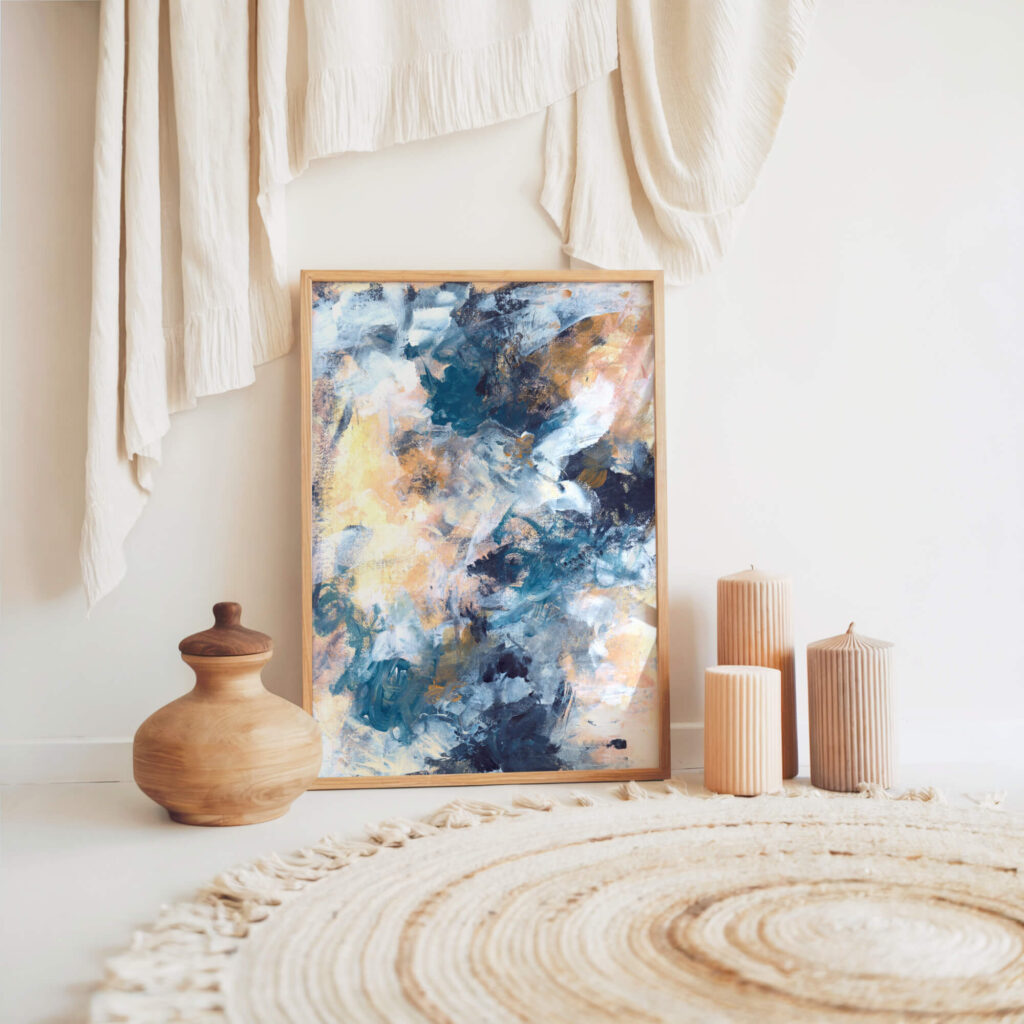
Capsule Commission
Created privately, one at a time, through stillness and reflection. Limited spaces each season to preserve depth and intimacy.
The Last 10
Ultra-limited, hand-embellished editions. No more than ten will ever exist. Made to ground, steady, and hold presence at the highest tier.
The Future of the Luxury Art Market
If the last decade of the luxury art market felt like being trapped at an overcrowded party, too loud, too bright, everyone shouting over each other, the next one feels like finally stepping outside for air. The energy is shifting from spectacle to sincerity. Collectors are tired of being entertained. They want to be moved.
The future of luxury isn’t going to be louder; it’s going to be more deliberate. The emphasis is quietly sliding away from “What’s trending?” and moving toward “What’s true for me?” That question changes everything.
Collectors are beginning to recognise that real prestige doesn’t come from public recognition but from private resonance, that moment when a piece feels like it’s been waiting for you. It’s less about finding something new and more about finding something that feels inevitable.
And perhaps the best part is how this evolution is naturally filtering the noise. The loudest collectors, the ones who once treated art like a status sport, are fading into the background, while the more emotionally intelligent ones, the people who actually care about energy, presence, and purpose, are quietly taking over the market.
You can see it happening already. Works are selling privately before ever touching a public platform, because collectors want emotional assurance, not social validation. Designers are selecting art to stabilise energy within a space rather than to create a talking point.
The future of collecting, in other words, is less about owning what everyone wants and more about living with what feels right. The luxury art market isn’t shrinking; it’s sobering. It’s shedding the need for performance and returning to something far more interesting, emotional precision.
How to Engage with True Exclusivity
True exclusivity has always been misunderstood. People imagine it as something that requires access or arrogance, but in reality, it’s a question of rhythm. The emotionally intelligent collector understands that slowing down is the real luxury.
When someone enters The Collector’s Vault, what usually catches them isn’t the art itself but the atmosphere it creates, a sense of deliberate quiet that feels almost out of place in the modern world. There are no walls shouting “buy me.” There’s no sense of rush or urgency. There’s only stillness, and stillness gives permission to feel before deciding.
That’s what today’s collectors crave but rarely find, an experience that doesn’t ask for attention but earns it. Private access restores that dignity.
When collectors spend time with art this way, they’re reminded that exclusivity isn’t about exclusion at all. It’s about depth. It’s about being invited to notice what resonates, to experience that subtle click of recognition when you realise that something has already chosen you back.
No performance, no pretending, no perfectly timed PR announcement, just that calm, quiet certainty that what’s right will stay.
That’s what true exclusivity feels like: not a secret, but a signal.
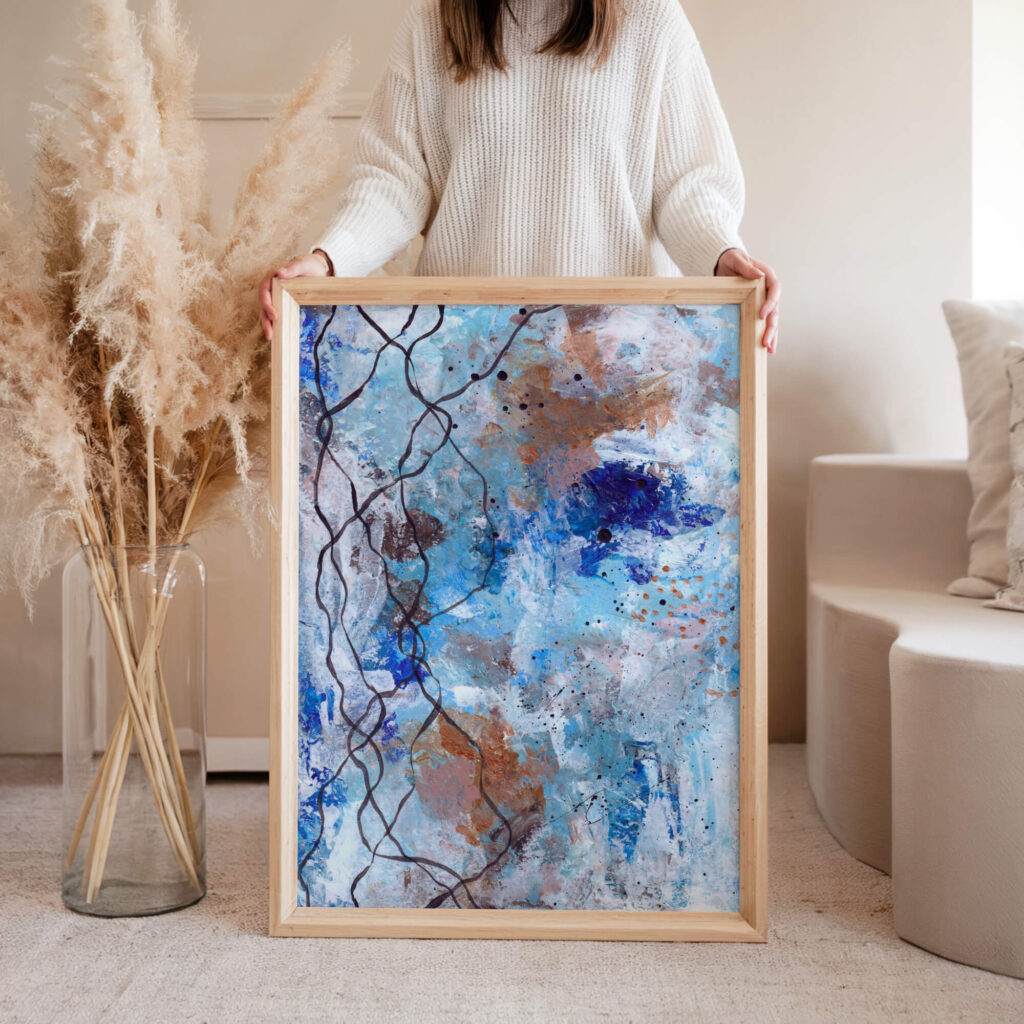
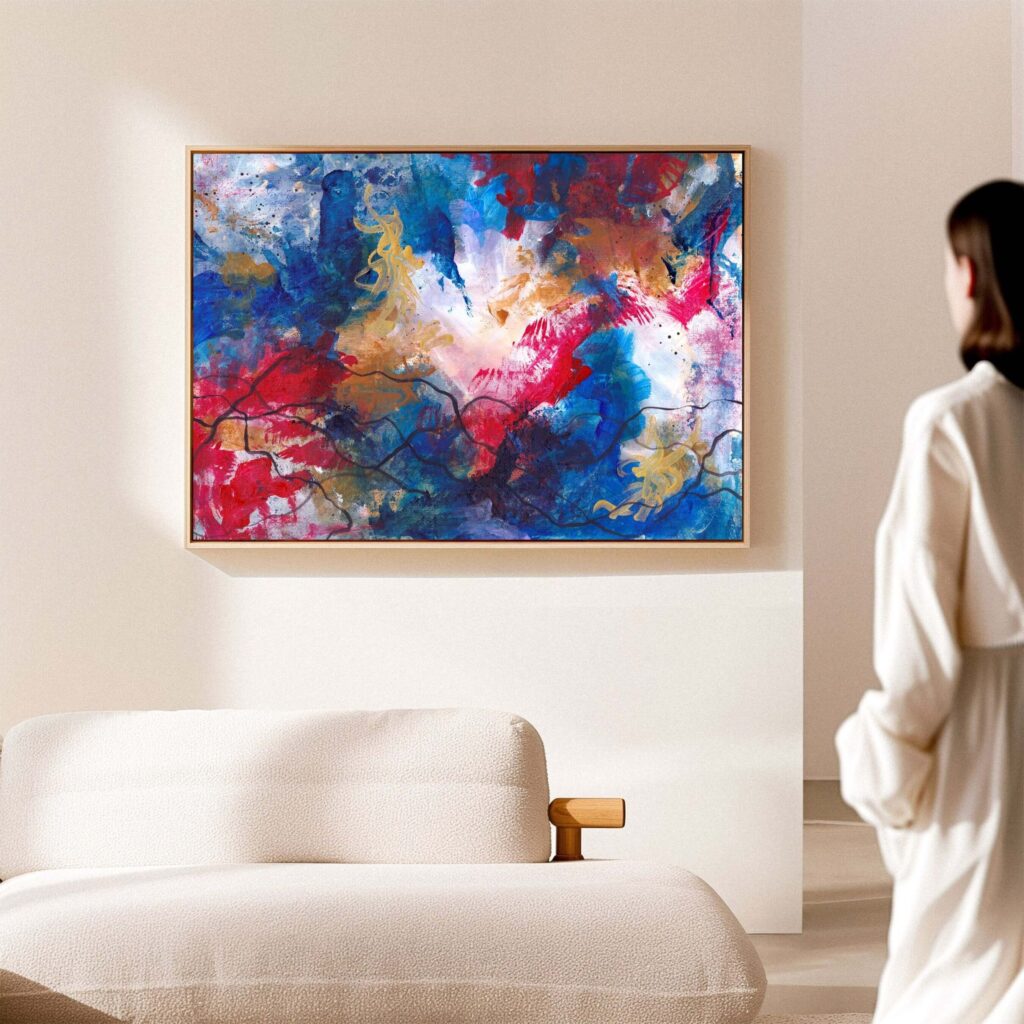
Conclusion: The Return to Meaning
Luxury has gone through its restless teenage phase, the one obsessed with attention, approval, and aesthetics that outshouted its purpose. What’s happening now is a return to adulthood: to calm, to substance, to care.
The luxury art market isn’t in crisis; it’s maturing. The noise is dying down, and what remains actually feels good again, art that regulates a room instead of dominating it, collectors who buy because they feel something rather than because they need to prove they can.
Privacy, once mistaken for secrecy, is being recognised as the ultimate form of refinement. When something is private, it’s protected. It holds its shape. It keeps meaning intact.
The most luxurious experiences now are those that respect your time, your nervous system, and your need for quiet, whether that’s a private dinner, an unlisted gallery appointment, or a collection like The Vault, where presence replaces performance and art feels human again.
If you strip away all the noise, all the salesmanship, all the spectacle, what remains is the reason people ever cared about art in the first place: it makes us feel more like ourselves.
And maybe that’s the real secret, the greatest luxury isn’t possession at all. It’s peace.
